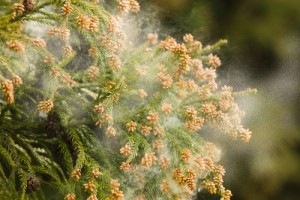Tree Pollen Allergy: The Ultimate Survival Guide

The famous boxer, Joe Louis, was once quoted saying his opponent ‘He can run, but he can’t hide.’
The same might be said for patients with spring tree pollen allergy symptoms. You can try to run and hide by going indoors, but eventually, you will have to go outside and face the pollen.
Avoiding Pollen
This is not the best strategy for avoidance. We just got through an awful winter in the Northeast, and everyone is itching (not literally) to get outside and enjoy spring.
However, spring is also a time when allergies flare up. I am now seeing quite a lot of new patients being affected by tree pollen allergy symptoms. These effects include sneezing, red and itchy eyes and coughing.
But there is good news. I have a plan that can get you through the season without looking like you just fought Joe Louis.
Fighting Tree Pollen Allergy Symptoms
The key to ‘fighting’ symptoms of pollen allergies is to not get cornered into a trap. What does this mean? Ideally, you should start taking medication at the first sign of symptoms.
Do not think, ‘Oh, this is just one bad day.’ This is a mistake! Allergies do not work like this. Every year with the arrival of spring, tree pollen starts to come out and you can see its remnants on the sidewalks and cars.
This is just mother nature doing her thing so that birds and bees are fed and the life cycle of plants continues. However, this whole process is tough on patients (like you) who suffer from a tree pollen allergy.
What Should You Do?
If you suffer from tree pollen allergies, there are a number of steps you can take to try to win the fight…
Allergy Symptoms
If you start to experience a headache, eye irritation, nasal congestion or coughing, these could be symptoms of pollen allergies. You should go to the allergy section of the pharmacy and find the appropriate medication.
Today, most of the effective allergy medications are available over-the-counter, meaning you can avoid a doctor’s visit to get your treatment started.
Nasal Symptoms
If you have a particular nasal symptom, such as nasal congestion and sneezing during tree pollen allergy season, 2 nasal sprays will work immediately – Nasacort and Flonase (fluticasone generic version). Until a few years ago these nasal sprays were prescription medications but now are advertised prominently at the pharmacy counters.
They are generally very safe, just be aware if you have glaucoma or you are prone to Herpes cold sores.
It is important that you use proper technique when using nasal sprays: insert the nasal spray gently into each nostril, tilt the spray toward the outer aspect inside the nose and spray. Do this twice in both nostrils.
If you still are uncertain, you can ask your pharmacist, or go to the drug companies’ website and watch a demonstration.
One other tip: It Is best to use nasal sprays in the morning, even if you feel your symptoms of pollen allergies are worse at night. These sprays work 24 hours and take some time to reach peak effectiveness.
Eye Symptoms
Eye allergy symptoms are best treated with eye drops. Unfortunately, the eye drops available over-the-counter are the older versions. These drops can help tree pollen allergies but I don’t recommend them for continual use because they have decongestant medication combined with the antihistamine.
The decongestant component might “get the red out” of your eyes as they say in the commercials, but it can lead to rebound effects that make it difficult to stop using it. The best eye drops are current prescriptions, such as Optivar or Pataday. They tend to be expensive, but are very effective.
Multiple Symptoms
If you have multiple symptoms (nasal, eye and throat) it is best to add an antihistamine to the regimen. All antihistamines are available over-the-counter and are effective, but some are more effective than others.
If your allergy symptoms are mild, Claritin (Loratidine) may be all you need. If your symptoms are stronger, Allegra (Fenofexidine) or Zyrtec (Cetirizine) are better options. Allegra and Zyrtec act for longer. Zyrtec may be the strongest, but some patients complain of lasting sedation.
It is best to take antihistamines at night, so they can reach optimal activity in the morning when the tree pollen tends to peak.
Lower Respiratory Symptoms
If you have lower respiratory symptoms such as coughing or wheezing, then it is essential that you see a doctor. Just make sure you don’t ask for an antibiotic. If you have allergies they will not help, and may only make things worse.
Prescription inhalers, such as Advair, Dulera or Symbicort have dual medication to open up the bronchioles and clean out the phlegm. These also require proper instructions to use correctly.
Spring Tree Pollen
Finally, if the spring tree pollen season seems to be your “opponent” year after year, it makes sense to see a doctor about allergy immunotherapy. Using sublingual allergy drops can reverse and give lasting protection to allergy sufferers (like you) from pollens to animals to dust and mold.
It really is your choice: you don’t have to run or hide, you just need to be prepared to beat the tree pollen allergy season!
Dr. Dean Mitchell
Mitchell Medical Group, NYC & Long Island

